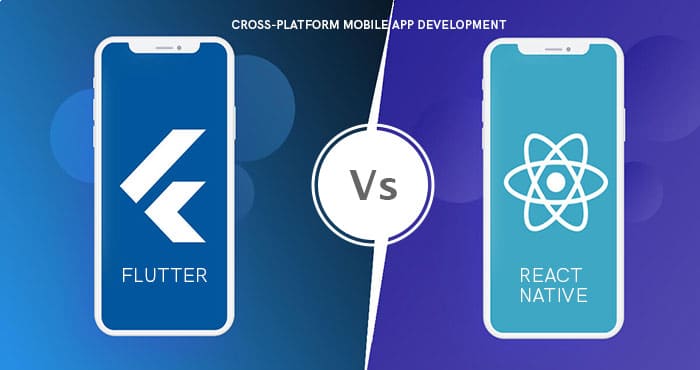You’ve written a great blog post. Why stop there? You can repurpose blog content, that means using the same content in new ways, so more people see it. But how to do that? Well, this blog answers that for you.
Read on to get some amazing content reuse ideas and steps of multi-channel marketing. So, let’s get started!
What Does “Repurpose Blog Content” Mean?
Imagine you write a story. Now you take that same story and turn it into:
- a picture,
- a short video,
- a speech,
- or a game!
That’s called repurpose blog content. You didn’t write something new—you used the same idea in new ways. That’s also called content reuse or content recycling.
Example:
- A blog post has ten tips. You break it into ten small posts for social media.
- You record yourself reading the blog, turning it into a podcast.
You are just reusing good content and sharing it again in different formats.
Why Should You Repurpose Blog Content?
Reach More People
Some folks read blogs. Others might have more inclination towards watching videos or listening to audio. If you only blog, video and podcast lovers miss out. But if you share content reuse in other forms, more people can see it. That’s content distribution across channels.
Save Time and Energy
Writing one long post takes lots of work. But if you reuse it, you get many new pieces from it, without extra writing. That’s smart, work once, share many times.
Better SEO (Search Engine Love)
Search engines like Google see lots of content on your topic and rank you higher. Repurposed versions (video descriptions, image posts, emails) give more chances to be found.
Helps People Remember
If someone sees your tip in a blog, then again in an email or video, they remember it better. This repetition makes your message stick.
Longer Life for Good Content
Old posts often fade. But repurposing them keeps them fresh, like making new versions for email, social media, or podcasts. That’s evergreen magic.
Better Results (ROI)
Return on investment improves. You use one piece of content many times. Studies show people reuse content 2–5 times and get up to 40% more leads.
Which Blog Posts Should You Repurpose?
Pick Your Winners:
Look at your analytics. Choose posts that:
- got lots of visitors,
- people shared,
- or are still useful (evergreen).
First, Refresh If Needed:
If a post is old info (like statistics or references), update it first. Then repurpose.
Make Repurposing Part of Your Plan:
When you write a post, think ahead:
- “I can turn its tips into tweets”
- “I can make an infographic”
- “I can record an audio version”
That early planning makes content reuse easier and faster.
How Does Content Repurposing Work? (Step by Step)
Step 1: Audit Your Content Library
- Find top-performing posts (via Google Analytics).
- Tag evergreen ones.
- Decide which posts are best to repurpose.
Step 2: Choose Repurpose Formats
Here’s what you can make from one blog post:
- Social media posts: turn each tip into a tweet or quote card.
- Infographic: visuals that show key stats or steps. Use simple tools like Canva.
- Video: record yourself or make a short animation.
- Podcast: read, talk, or interview on the same topic.
- Email mini‑course: turn the post into 3–5 emails, each with one lesson.
- Slide deck or presentation: turn points into slides for platforms like SlideShare or LinkedIn.
Step 3: Do Multi‑Channel Marketing
Plan where each piece goes:
- Blog (full post)
- YouTube or video platform
- Social media: X (tweets), LinkedIn (carousels), Instagram (Reels or picture quotes)
- Podcast apps
This is called multi‑channel marketing: same message, many places.
Step 4: Optimize Each for Platform
Don’t just copy-paste. Customize:
- Video gets visuals and hooks
- Instagram needs short, eye-catching slides
- Email needs friendly tone
- Twitter needs short sentences, hashtags
- Tailor each format to its platform audience.
Examples to Inspire You
- Convert listicles to LinkedIn carousels: each slide shows one tip. People swipe through easily.
- Turn blog into email mini-course: teach one point per day to engage subscribers.
- Infographics from data-heavy posts: share stats visually for better shares.
- Short-form videos (Reels or Shorts): pick punchy lines or tips and make 30–60 sec clips.
- Rewrite posts for buying-ready readers: change tone and call-to-action for conversion-focused content.
Tools to Help with Content Reuse
Here are friendly tools:
- Canva, Venngage, Piktochart for infographics, quote cards.
- Descript or transcription tools to turn audio into text or blog ideas.
- Video editors like iMovie or InShot for creating short videos.
- Email tools for scheduling and drip campaigns.
- Use platform analytics (YouTube, Instagram, newsletter reports) to measure engagement and clicks.
Formats You Can Use. Simple and Powerful
Here are easy ways to transform your blog:
Social Media Posts
Use your blog’s key lines or stats as posts on platforms like Twitter, Instagram, or LinkedIn. To boost interaction, add a question or CTA (“Which tip helps you most?”).
Infographics or Slide Decks
Turn lists, steps, or stats into visuals. Good for Pinterest, LinkedIn, or email. You can also embed them in your blog or share as SlideShares.
Short Videos or Reels
Take one tip or story:
- Record a short video (30-60 seconds) for YouTube Shorts, TikTok, or Reels.
- Use motion graphics, voiceover, or your face to explain the point.
Audio or Podcast
Record yourself reading the post or discussing the points. Let people listen while walking or cooking. Add transcription for SEO and accessibility.
Email Mini-Course
Break the blog into a short email series, each email covers one key tip. This gives readers value and draws them back to your site.
eBooks, Whitepapers, or Case Studies
Collect multiple blogs on similar topics. Combine them into one ebook or guide. Add a header, introduction, and extra visuals. Great as a lead magnet.
Use the Right Tools
Here are easy tools to help with content distribution and creation:
- Canva or Venngage: For infographic and quote-card design.
- Descript or Otter.ai: To turn podcasts or videos into text.
- InShot, iMovie, or online editors: For videos and Reels.
- RecurPost, Buffer, Hootsuite: To schedule posts across social media.
- Google Analytics, platform dashboards: To track performance and refine your strategy.
The Workflow: Your Repurposing Routine
Here’s a simple workflow to follow each time:
- Select a popular, evergreen blog post.
- Identify key ideas, quotes, stats, or tips.
- Plan formats (social cards, video, email, etc.).
- Create content pieces using tools suited for each format.
- Customize content for each platform (tone, size, visuals).
- Schedule posts via scheduling tools across channels.
- Track performance: views, clicks, downloads, social engagement.
- Learn what works: use data to repeat what succeeds.
- Repeat, using the same blog and fresh examples over time.
Best Practices to Keep It Smart and Smooth
Follow these simple rules to stay effective:
- Always tailor content for each platform, don’t copy the same post everywhere.
- Maintain a consistent brand look: same colors, fonts, tone across formats.
- Keep quality high. Never post low-effort slices. Better fewer, better pieces than many poor ones.
- Update old content before repurposing. Refresh stats, examples, or calls to action.
- Think through data: see what formats (videos, infographics, emails) get the most clicks or shares. Then lean into those more next time.
How to Measure Success of Repurposed Content
When you repurpose blog content, it’s smart to check what works. Use data to see where your content does best.
Track Important Numbers
- Views, likes, comments, shares on social media.
- Clicks or visits back to your blog.
- Email open rate and link clicks.
- Video watches and watch time.
This shows which formats perform best. If videos get lots of engagement, make more videos. If emails lead to blog visits, add more email mini‑courses.
Be Data-Driven in Content Distribution
Use tools like analytics to guide where and how you share content. For example, a data‑driven approach helps you know which platforms bring in traffic and which content style readers prefer.
Tracking helps improve your strategy and save time, so you focus on reproducing what
Advanced Strategies to Repurpose Blog Content
Now we will explore smart ways to make your repurposing engine work even better:
A. Format Transformation
If you’ve a blog post, try coverting it into a video, infographic, podcast, slideshow, or ebook. This isn’t just copy‑pasting, it means building new formats that share the same core idea in a different way. These changes boost content distribution and reach new audiences like visual or audio learners.
B. Micro‑Content Atomization
Break your post into bite‑sized pieces:
- Each tweet, quote card, or short clip is one key idea.
- Make sure each piece adds standalone value and leads back to the full blog post.
- This is called micro‑content atomization and helps fill up your content calendar with minimal effort.
C. Content Series & Sequencing
Turn a single blog into a planned series:
- Start with the full blog post.
- Follow with related emails, videos, social posts over days or weeks.
- Keeps people engaged and builds trust over time.
- This series format helps with multi‑channel marketing by weaving across blog, email, video, and social formats.
D. Evergreen Refresh & Update
Update older popular posts:
- Replace old stats, update examples.
- Add new sections if needed.
- Set the publication date fresh so Google re-crawls and redeems the post.
- This refresh extends the life of content and improves SEO performance.
E. Seasonal & Trending Adaptation
Match content to current events or holidays:
- A general guide becomes “Tax Tips for April”, or “Holiday Budgeting”.
- Uses existing content but aligns it with what people are searching now.
- Helps your message stay relevant and timely.
F. User‑Generated Content (UGC) Integration
Use your audience’s own posts and feedback:
- Turn comments or customer stories into quotes, testimonials, Q&A posts.
- Ask permission and give credit.
- Builds trust, community, and reuses audience-created content for more reach.
Choose the Right Mix: Content Reuse + Distribution
Combine simple and advanced ways to get the greatest effect:
- Start with a strong blog post (pillar content).
- Break it into micro‑content (quick posts).
- Transform it into video, podcast, infographic.
- Plan a content calendar for multi‑channel marketing: blog, social media, email, video, podcasts.
- Measure what works and repeat.
- Refresh older content to keep it alive.
- Bridge audiences by adapting to beginners or experts (use simpler or deeper versions).
This combined strategy helps you spread your message in the best way for every person, and you don’t waste time writing new content from scratch.
Final Tips & Takeaways
Repurposing your content is smart, and if any industry leader is denying it, you can doubt their qualifications without any hesitation.
- Think of repurposing blog content like making many small paths from one big road.
- Use content reuse to save time and energy.
- Plan for multi‑channel marketing—blog, email, video, social.
- Share smartly through content distribution using data to decide what to post where and when.
- Refresh old content to keep it working longer.
- Test different formats like emails, videos, infographics to see what works best.
- Be consistent with branding and voice across all formats.
- Use analytics and performance data to guide your strategy.
Final Thoughts
When you repurpose blog content, you’re not just recycling what you’ve written, you’re transforming it for new audiences in new ways. You save time, reach more people, stay consistent, and keep your work working hard.
Add content reuse into your planning. Use a multi‑channel marketing approach. Share smartly with content distribution powered by data. And give your best blog posts a long life by refreshing and transforming them.
Follow the steps: audit, plan, create, customize, schedule, measure, refresh and repeat. Soon you’ll be a content engine, turning one idea into many formats that reach readers, listeners, and watchers everywhere.
If you’re looking for digital marketing services, get in touch with us at Wildnet. We make standing tall in the digital world super easy for you.
FAQs
What is “content repurposing”?
When we talk about content repurposing, we basically mean that you convert whatever you’ve already made into something new. It can be a video, infographic, email, or a simple podcast. The main idea remains the same, but converts into something fresh. With this, you can reach more people, without having to strt from zero.
How is repurposing different from reposting or cross-posting?
- Repurposing means creating a new format (e.g., blog → infographic).
- Cross-posting is using the same content as-is on multiple platforms.
- Reposting is sharing the same content again on the same platform.
Which blog posts are best to repurpose?
Imagine you’re repurposing a content with a trend that is long lost. Do you think it’s going to bring you any value? Naah, right? This is why the content you plan to repurpose should be evergreen (basically something that people can relate to all the time). Those are ideal for content reuse.
What formats work well for repurposing blog content?
- Social media posts: pull quotes or tips
- Infographics or SlideShare visuals
- Short videos or reels
- Podcast episodes or audiograms
- Email mini-courses or newsletters
- Ebooks or guides compiled from several posts
How often should I repurpose the same content?
Every 6-12 months is a good rule. Refresh the content, update stats, and stagger versions across formats to avoid fatigue while maintaining steady content distribution.
Can content reuse hurt my SEO because of duplicate content?
Answer: Not until you’re simply restructuring your existing content into a new format like video, transcript, or infographic.
Copy pasting? Yes, it can definitely hurt your SEO.
What resources or tools help with repurposing content?
There are many. Still, what works for you can differ based on your requirments. Here are some recommendations from our side:
- Canva, Venngage for visuals
- Descript, Otter.ai for transcribing audio/video
- InShot, iMovie for short video editing
- Scheduling and analytics tools like Buffer, Hootsuite, RecurPost, and Google Analytics assist with multi‑channel marketing and tracking performance.
How do I choose what format to convert a blog post into?
Think about your audience preferences and the platform’s style:
- Visual learners → infographics or slide decks
- Audio fans → podcast
- Quick social media users → short videos or quote images
- Match the format to the audience and platform while staying on theme.
What challenges do people face when repurposing content?
The main hurdles are:
- Keeping organization in workflow
- Ensuring quality doesn’t drop across formats
- Staying consistent with brand voice and message
- Adapting for different platform requirements
- A clear plan and process can help overcome these.
How can I measure the success of repurposed content?
Track metrics like:
- Social engagement (likes, shares, comments)
- Clicks back to original blog
- Email open and click rates
- Video watch time or listens (for podcasts)
- Use performance data to guide your future content distribution and reuse strategy.






